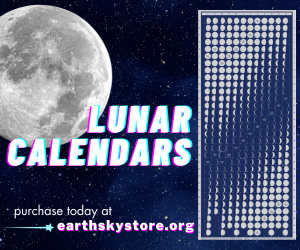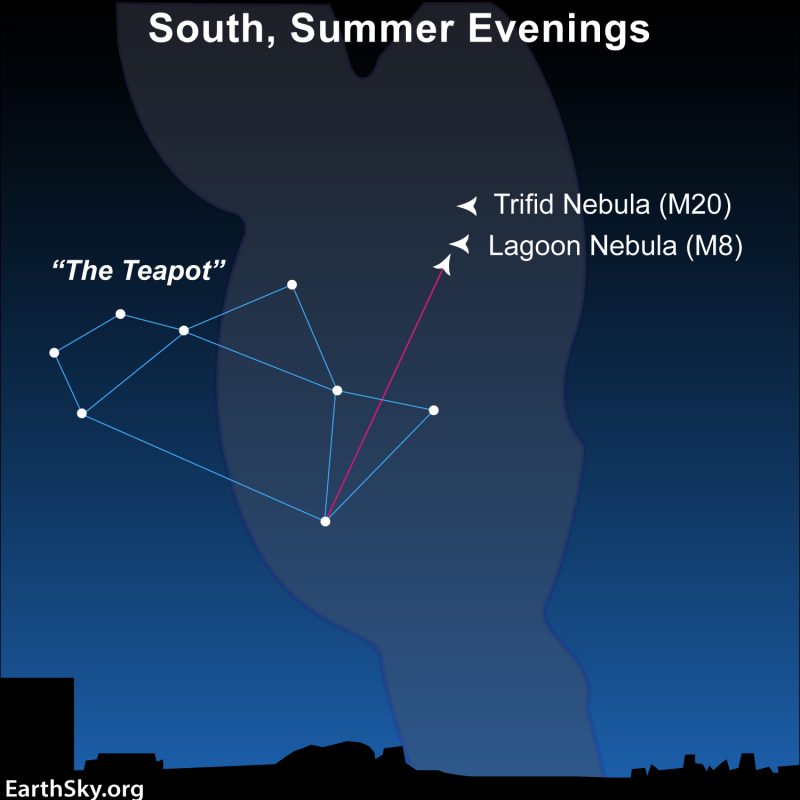
The Trifid Nebula
The Trifid Nebula (Messier 20 or M20) is one of the many binocular treasures in the direction of the center of our Milky Way galaxy. In fact, its name means divided into three lobes, although you’ll likely need a telescope to see why. On a dark, moonless night – from a rural location – you can star-hop upward from the spout of the Teapot in Sagittarius to another famous nebula, the Lagoon, also known as Messier 8. In the same binocular field, look for the smaller and fainter Trifid Nebula as a fuzzy patch above the Lagoon.
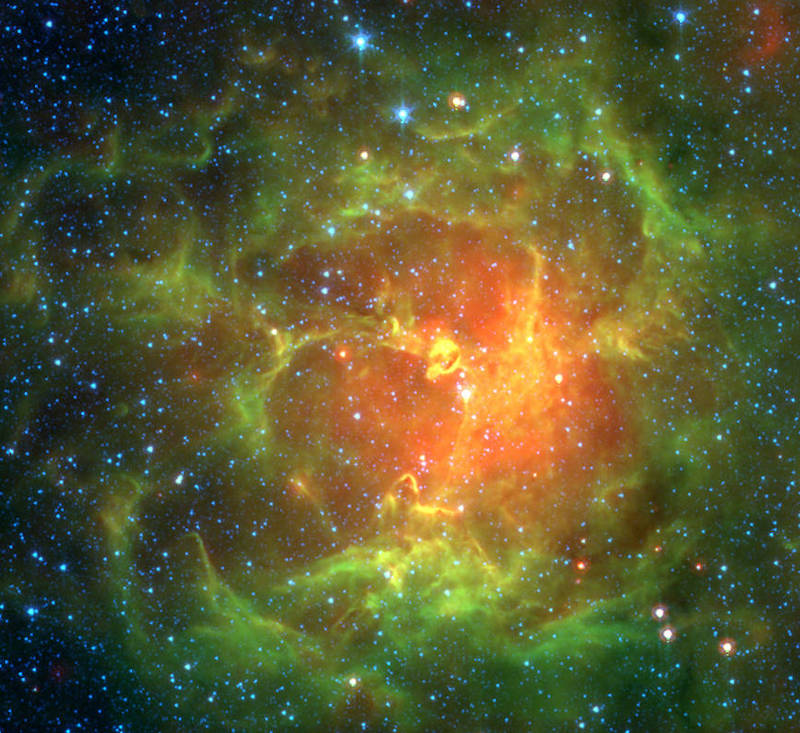
Locating the Trifid Nebula
To locate this nebula, first find the famous Teapot asterism in the western half of Sagittarius. The Teapot is just a star pattern, not an entire constellation. Nonetheless, most people have an easier time envisioning the Teapot than the Centaur that Sagittarius is supposed to represent. How can you find it? First, be sure you’re looking on a dark night, from a rural location.
Then, look southward in the evening from Earth’s Northern Hemisphere. If you’re in Earth’s Southern Hemisphere, look northward, closer to overhead, and turn the charts below upside down. Want a more exact location for the Teapot in Sagittarius? We hear good things about Stellarium, which will let you set a date and time from your exact location on the globe.
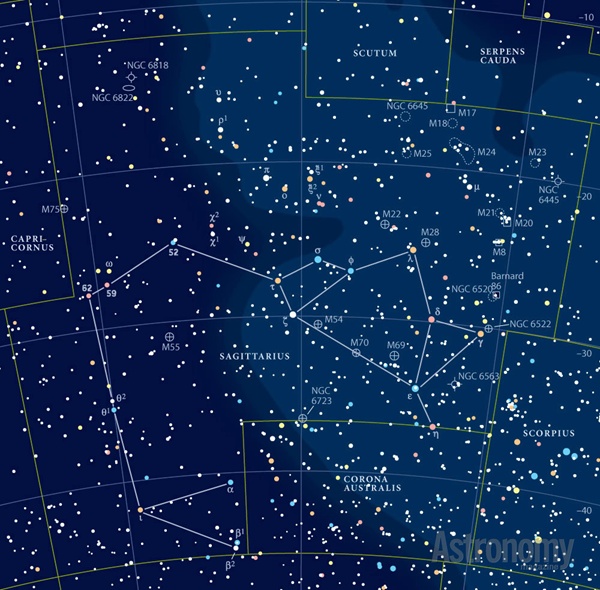
The Lagoon Nebula
Whether the close-knit nebulosity of the Trifid and the Lagoon represents a chance alignment or an actual kinship between the two nebulae is open to question. Both the Trifid and Lagoon are thought to reside about 5,000 light-years away, suggesting the possibility of a common origin. But these distances are not known with precision, and may be subject to revision.
Both the Trifid and Lagoon are vast cocoons of interstellar dust and gas. These are stellar nurseries, actively giving birth to new stars. By the way, the Trifid and Lagoon Nebulae are a counterpart to another star-forming region on the opposite side of the sky: the Great Orion Nebula.
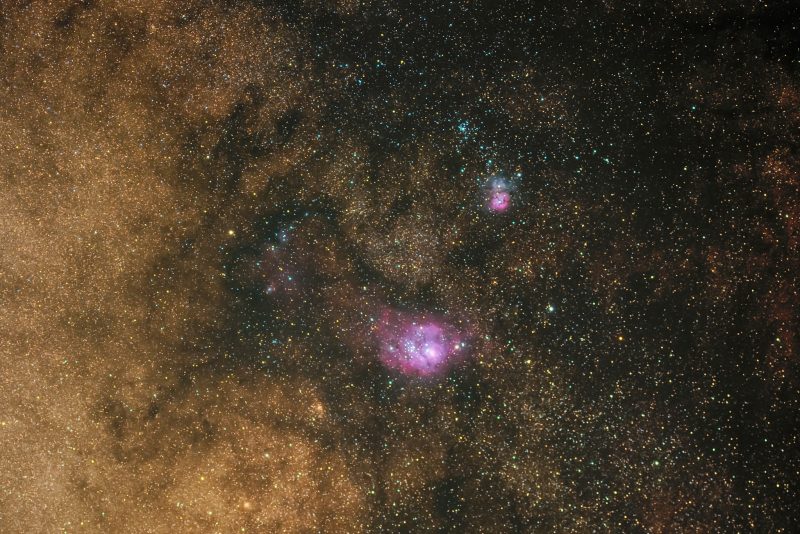
Bottom line: The Trifid nebula (M20) is located in the direction of the center of the Milky Way galaxy. If you have an extremely dark sky, you can see the nebula on a moonless night as a fuzzy patch in the Milky Way. Binoculars show more and a telescope reveals even more detail.
Read more: Find the Teapot, and look toward the galaxy’s center





